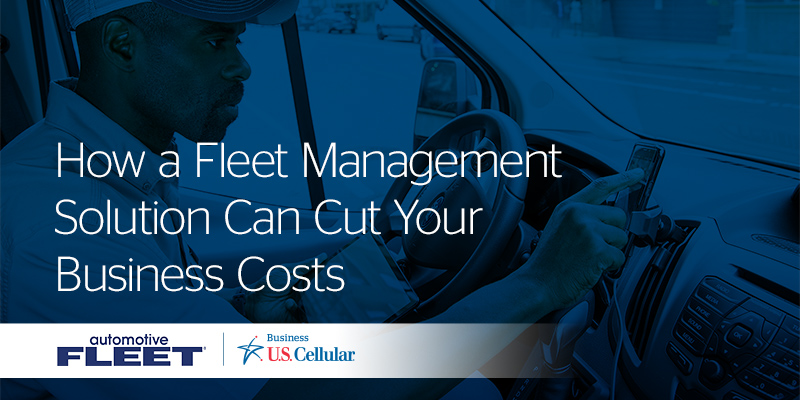Use Vehicle Tracking to Set up Your Business for Growth and Success
Vehicle tracking can be essential to growing your business and helping ensure the performance and safety of your employees.
Make sure you’re set up for success by reviewing the top five ways to prepare for implementing a vehicle tracking solution.
1. Read the Fine Print
Make sure you understand everything you’re agreeing to. Most providers ask that you sign an initial two- or three-year contract. This time frame is standard, but variables of the contract can cause problems if you don’t pay close attention.
For example, some vendors may slip automatic renewal clauses into your contract, or surcharges for additional devices or software upgrades.
Tips:
- Don’t get locked into a long-term agreement that doesn’t benefit your company for the contract’s entire length.
- Pay attention to these phrases and surrounding language in a contract:
- Sometime within
- Not less than
- Sometime before
- Before the end
- Sole discretion
- Without cause
- Further assurances
- Mark your calendar with the contract expiration date to ensure that you are able to cancel services if they aren’t working for you.
2. Develop a Sound Strategy
Purchasing and implementing a vehicle tracking solution isn’t a one-size-fits-all proposition. A poorly defined strategy for installation, configuration and organization-wide adoption and training will impact its success.
Make sure you have a deep understanding of what your vendor proposes, paying attention to how they’ll integrate with your existing technology and business processes. Finally, your provider should provide service guarantees at key intervals to optimize your solution and add features.
Tips:
- The cheapest option is not always the best option. Assess your needs and find a solution that accommodates them.
- Plan ahead: When it comes time for vehicle hardware installation, minimize disruptions by scheduling a time when vehicles won’t be on the road, such as during routine maintenance or inspections.
3. Define & Realize ROI
Make sure you set yourself up for success — and that you understand the metrics by which you’ll define that success.
The upfront cost of vehicle tracking can be split into two categories: strategic metrics and tactical metrics. Strategic metrics tackle issues that develop over time, impacting policy and overall operations. Examples include optimizing route scheduling and personal vs. professional vehicle use policies. Tactical metrics more quickly impact the business. Examples include employee driving habits, maintenance records for individual vehicles and individual personnel efficiency.
For example, without vehicle tracking it’s difficult to rely on anything but the honor system to distinguish between professional and personal use of company vehicles. Consumables such as fuel are trackable expenses that can be lowered through a vehicle tracking system.
Tips and Benefits:
- During implementation, develop metrics for the following key factors that impact your business:
- Upfront cost
- Route schedule
- Vehicle use
- Vehicle maintenance
- Engine maintenance
- Driver behavior
- Fleets that implement vehicle tracking can see a 10.2% decrease in fuel consumption.1
- Vehicle tracking can reduce the average journey time by 14% and lower maintenance costs by up to 25%.2
- According to Ford Motor Company, one hour of idling time is nearly the same as driving 25 miles.3
- Fleet management can reduce total miles driven by up to 10%.4
4. Ensure Driver Adoption
Driver understanding and adoption is critical to achieving projected ROI. For example, while it can help reduce overtime costs, a vehicle tracking solution can also contribute to fairer overall wages for drivers and calculate wages and overtime payments based on actual hours worked.
Vehicle tracking also helps reward performance. Software that tracks driver speed and location can recognize a route-optimized driver who delivers on time and efficiently with minimal idling time.
Conversely, vehicle tracking solutions can cut down on bad behavior such as:
- Rapid acceleration and speeding
- Sudden or hard braking
- Slow progress or idling
- Inefficient routing
- Taking unauthorized or excessive breaks
When employees understand the activity that’s being tracked, they are more likely to hold themselves accountable for reaching these benchmarks. And vehicle tracking helps employers respond quickly in emergencies and dispatch necessary resources to ensure employee safety.
5. Compliance Considerations
No vehicle tracking solution can ensure compliance, but it should complement your compliance practices. It’s also important that your vendor understand regulations and mandates and be able to show how their solution supports compliance and regulation. For example:
HOS Score
The FMCSA hours of service (HOS) rules are designed to eliminate the type of drowsiness that can lead to crashes. Make sure that your solution provider is aware of HOS rules and that they offer solutions that work to prevent violations.
CSA Scores
Short for compliance, safety and accountability, CSA scores are calculated from the last 24 months of a company’s safety data, including roadside inspections, crash reports, investigation results and registration details.
The right solution will help you excel in each category and earn the highest score possible.
Vehicle tracking is a powerful tool in the pursuit of greater profits, accountability and performance. By rigorously researching a provider and scrutinizing every detail of a prospective solution down to the fine print in your contract, you can ensure a successful implementation, encourage employee adoption and deliver on your expected ROI.
5 Ways to Prepare Your Business for Vehicle Tracking Success
Driver safety is a top priority for fleet managers. Watch this free on demand webinar to learn how fleets are using telematics technology to improve safety and shape driver habits.
About UScellular™
UScellular offers a broad suite of business technology solutions — all backed by a network with national coverage that works wherever you are, even in rural areas.
To learn more on how vehicle tracking can benefit your business, call 866-616-5587 today for a free informational consultation.
Related Resources
Solutions Guide
References
- Nolan, Kelsey. “How to Increase Fleet Productivity Using Telematics.” Automotive Fleet, 2015. http://www.automotive-fleet.com/article/story/2015/10/how-to-increase-fleet-productivity.aspx
- TomTom. “Maximizing ROI on Fleet Management.” https://s3-eu-west-1.amazonaws.com/cdn.webfactore.co.uk/6443_ttb-maximising-roi-on-fms.pdf
- Ford. “How idle time impacts engine maintenance.” https://www.fleet.ford.com/truckbbas/non-html/DeiselTips/DLSIDLETIMESS.pdf
- GPS Insight. “2016-17 Fleet Management Technology Report.” 2016. https://www.gpsinsight.com/wp-content/uploads/2016/12/Fleet-Management-Technology-Report-2017.pdf








